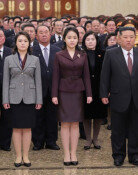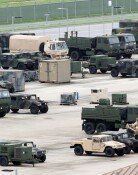Persistent high inflation and early signs of economic slowdown signal imminent stagflation
Persistent high inflation and early signs of economic slowdown signal imminent stagflation
Posted February. 18, 2023 04:14,
Updated February. 18, 2023 04:14
The Korean government officially confirmed that the nation is in economic slowdown. Korea's Ministry of Economy and Finance analyzed in the 2023 February edition of its "Current Economic Trends" bulletin that the Korean economy started to slow down as inflation remains high, domestic demand recovers at a rather moderate pace and economic sentiment and exports continue to be sluggish. The word "concerns," which the Ministry has been using since last June when assessing the nation's economic situation, was gone in its economic report in Korean version. It indicates that our economy is now faced with imminent "stagflation" caused by a double whammy of high inflation and business downturn.
All economic indicators are already signaling sluggish economy. The total export volume in January 2023 decreased by 16.6% year on year due to sharp decline in overseas semiconductor sales and exports to China. Imports, on the other hand, rose rapidly, pushing the trading deficit during the first 40 days of 2023 to a record high at 17.6 billion U.S. dollars, equivalent to 37% of the annual trading deficit last year. Even the domestic consumption is weakening as the real income declines due to high prices and discretionary spending drops with excessive household debt and interest rate hikes. Average operating rate of the country’s large companies has fallen to below 80% due to huge inventory accumulation. Business sentiment has deteriorated to the worst level in two years and four months.
External factors are also foreboding. As inflation may likely remain high due to higher-than-expected employment and domestic demand in the U.S., anticipation is weakening that the U.S. Federal Reserve Board (Fed) might soon stop raising the benchmark interest rate. U.S. dollar is strong again, driving the foreign exchange rate over to 1,300 Korean won per dollar. Strong dollar would not only help drive up the local prices including utility bills by pushing up import prices of energy such as oil and LNG but deteriorate the nation's trading balance. The Korean government and companies expect a silver lining in exports as China reopens its borders, but the Chinese economy is also uncertain to recover any time soon from its property bubble burst and ongoing trade conflict with the U.S.
What's more worrying is that the imminent stagflation is rather structural. Exports to China accounted for 19.8% of the total in January 2023, dropping below the 20% range. The volume has been in a continued decline since 2018 as China has focused on boosting its domestic demand. Global market landscape over our core export products including semiconductor is changing fast as well. High oil prices which spur high inflation and confrontation between world superpowers have become a constant.
It is indeed high time that the state-led core strategies over the nation's industries should be revisited and revamped. It would be near-sighted to focus only on impending economic slowdown and trading deficits. We need to draw a new map for Korea's future industry structure that can make our people prosper in the next ten and 20 years.
Joong-Hyun Park sanjuck@donga.com




![전기매트 틀고 자면 몸에 전자파 쌓인다?” 직접 측정해보니 [알쓸톡]](https://dimg.donga.com/c/138/175/90/1/wps/NEWS/IMAGE/2026/01/02/133079758.3.jpg)

![금수산 참배 사진, 김주애의 위치가 말하려는 것[청계천 옆 사진관]](https://dimg.donga.com/c/138/175/90/1/wps/NEWS/IMAGE/2026/01/02/133079009.1.jpg)
